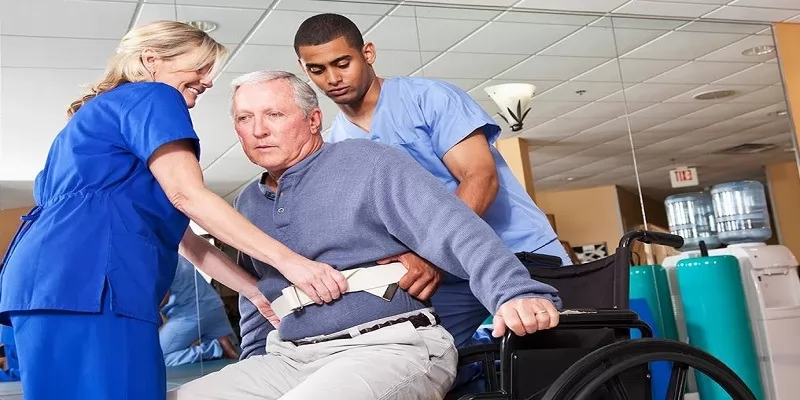
What is a Gait Belt?
A Gait Belt is used for safe handling and mobility at hospitals, nursing homes, clinics, or also in the homes. It aides people with any injuries, brittle joints, or old age. These are sturdy belts. A patient must be at least partially ambulatory, that means, they must be able to handle their own weight to some extent to use the belt. It allows the caregiver to offer assistance to the patient with performing routine tasks such as walking.
Even though the proper use for patients is not only limited to licensed practitioners. It is, however, of utmost importance to learn the proper body mechanics that will help to avoid any injury.
Also Read: 5 Benefits of Therapeutic Bed Mattress You Probably Didn’t Know About
Gait Belt Uses for Patient Mobility
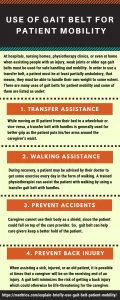
For Patient Transfer Assistance
While moving a patient from their bed to a wheelchair or vice-versa, a transfer gait belt with handles is generally used for better grip. The patient puts his/her arms around the caregiver’s waist, thus providing support to both.
For Patient Walking Assistance
During recovery, a patient may be advised by their doctor to get some exercise every day in the form of walking. A trained physiotherapist, caregiver or even a family member can assist the patient with walking. It will allow the assistance provider to get a good hold of the patient while assisting them off the bed and even when the patient attempts to walk on their own. The handles offer a far better hold than traditional padded ones.
Gait Belts Prevent Accidents
There are some cases when a patient is weak that they tend to fall easily. In such an instance, a caregiver can support the patient together with the patient’s efforts. So, a Padded Gait Belt with handles and leg support can help caregivers keep a better hold of the patient.
For Preventing Back Injury of The Care Provider
When assisting a sick, injured, or an old patient, it is possible at times that a caregiver will be on the receiving end of an injury. The belt minimizes the risk of getting a back injury which could otherwise be life-threatening for the caregiver. The teeth of the buckle are placed safely for providing maximum comfort to the patient.
Several factors go into providing the best mobility assistance to patients, and one of them includes using walking and padded gait belt with handles made by a trustworthy company like Medtrica.
Why Is Gait Belt A Better Option?
Making use of a comfortable gait belt when helping a patient to walk or while transferring a patient provides both the patient and the caretaker increased security and safety. Here’s why using a hospital gait belt is a better option:
- Assists the caretaker in moving the patient from one place to the other
- Helps caretakers to help raise a patient without straining their back
- Allows a caretaker to stabilise a patient who loses balance while walking
- Safeguards the patient and caretaker from unwanted injuries
Every physical therapy gait belt sports a handle that helps to effortlessly grasp on to the belt to stabilise the patient. So, it’s a great patient transfer belt to consider using.
When Should I Use a Gait Belt?
It would help if you used a Gait Belt only when the patient has some weight-bearing capacity or is partially dependent. When you have to lift or transfer a patient, it is proper medical equipment to use. It makes the process much easier for both the caretaker and the patient. If you assist someone regularly with walking or moving around, it is good to consider buying this patient transfer belt. If you use this correctly, it can help in cutting down the hassles involved in the task and reduces the risk of possible back injuries.
Here are Few Circumstances for Gait Belt Uses:
- When you want to safely transfer a patient from a wheelchair to bed or vice versa
- When you want to help a patient with standing and sitting
- When you want to accompany a patient while walking around
- When it involves anything with moving or lifting a patient
- When there are senior citizens at home, you can use a gait belt for elderly
Now that you know when you should use this transfer assisting equipment make sure you purchase good quality gait belt with handles and a metal buckle for added safety. With this belt around the waist of the patient, as a caretaker, you don’t need to worry about any problems in the process of transferring the person. One thing to keep in mind is that this belt is only an assistive device and should not be used for lifting or moving patients outright.
How to use a Gait Belt?
It is really handy when you have to lift someone, transfer them to/from bed to wheelchair or simply assist them in movements. A patient needs to be at least partially capable of holding onto their own body weight. Whether you are a caregiver or just someone helping out your loved one, you must accustom yourself with the proper body mechanics required to do this task on a regular basis. This will help you to not overexert yourself and also avoid any injury.
Step To Take While Using A Gait Belt Either To lift A Patient:
1. Before you put on a gait around the patient, help them to achieve a sitting position, preferably on the edge of the bed facing you.
2. Inform the care recipient that you will be placing it around them.
3. Assure the patient it will be taken off their waist once the task has finished.
4. Place the belt around the patient’s midsection with the buckle facing the front side. If the patient has a weak bladder, do not tighten the buckle directly over it, instead, place it slightly off-centre and make it more comfortable that way.
5. Also, ensure that the patient is wearing clothes before you put it on. If they have weak skin, it is best to place a towel in between the belt and their body. Typically, you should be able to slide two fingers in between the two.
6. Before you help them stand on their feet, ensure that it is tightly snug in place. Ensure everything once.
7. The patient must face the care receiver with knees bent and back straight.
8. When lifting a patient or transferring, place your arms around his or her waist and put your hand under the belt with your palm facing outwards. It will help you to reduce the effect of tightening the belt.
9. Use the ones with a good grip for better safety.
Opt for modern designs made by companies like Medtrica who are pioneers in manufacturing medical products.
Also Read: Shocking Benefits Of Bariatric Mattress For Heavy People
Benefits of Gait Belts
Also known as transfer belts, gait belts are assistive safety devices used to transfer patients from one location to another. These are especially useful in cases where patients are immobile or are facing major discomfort in movement.
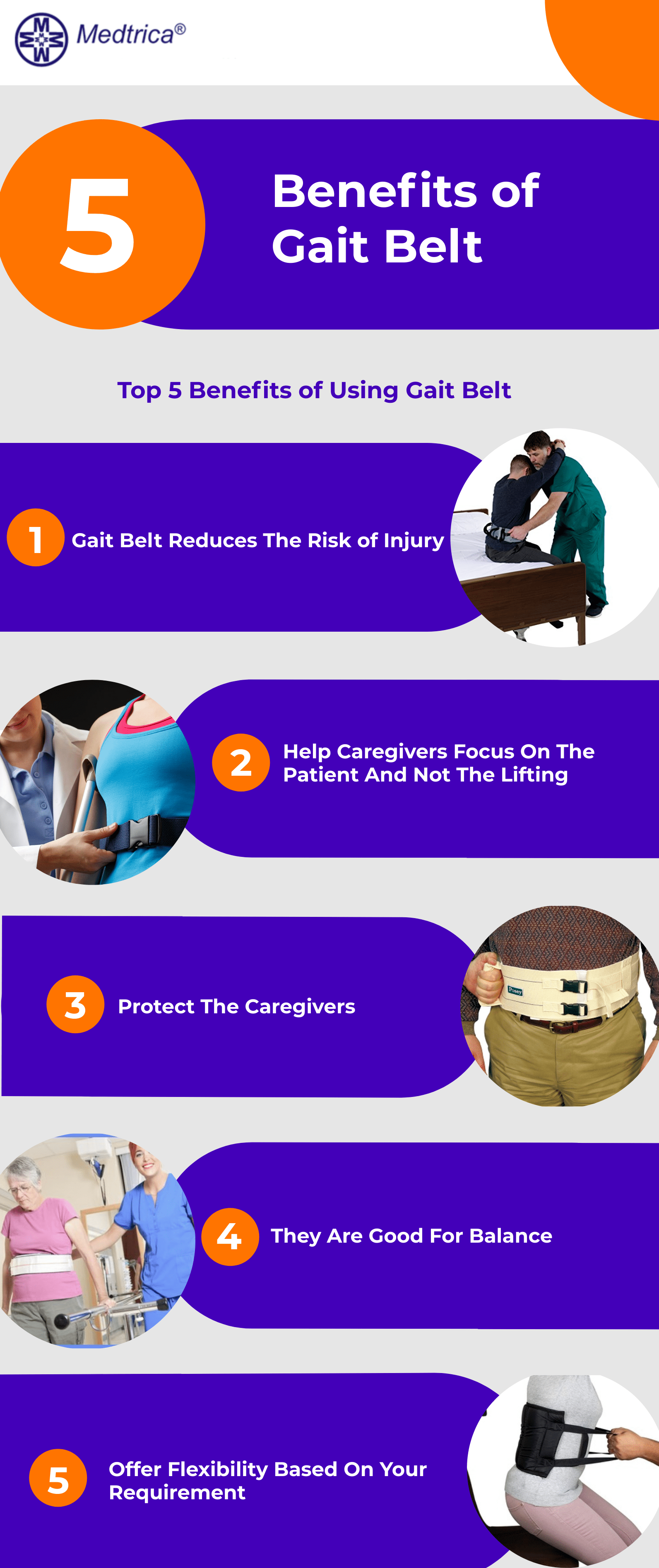
Here are 5 benefits of using gait belts over traditional ways of patient transfer.
It Is Comfortable And Safe
The belt can be used if the patient is unwell. Older patients who may be frail or weak can also get the support they need during the transition without any risk of injury. A high-quality gait belt will have a non-slip plastic buckle or metal buckle to prevent the patient from sliding or falling from hospital bed air mattress or while walking.
Help Caregivers Focus On The Patient And Not The Lifting
Another significant advantage is that the strain on the caregivers is minimal. Instead, they can focus on the patient’s comfort and ensure that they are transported carefully and safely. The caregiver can also use the handles, or place their hand underneath the gait belt for patients to remain steady.
Protect The Caregivers
When a patient is manually moved by lifting and placing on a stretcher, the chances of them getting injured are higher. In fact, gait belts also provide physical relief to the caregivers when they are helping the patient.
They Are Good For Balance
A belt is strapped around a patient’s midsection, and can temporarily stabilize a weak or frail patient, or one with a postural problem for the duration of the transfer. This reduces the strain on the backbone or other parts of the body as well. They can be used to support patients while they walk if they are unable to walk without support.
Offer Flexibility Based On Your Requirement
They can be horizontal or vertical, and hence suit a range of functions. They can be used for distances, such as across a large hospital or transfer from a bed to the washroom.
There are many kinds of transfer sling and gait belts available, ranging from their design to the material used – from cotton, canvas and leather to nylon. Some of them can offer a combination of waist straps, knee straps, floor leads and handles as well. So, choose one depending on the needs of your patients.
Different Types of Transfer Gait Belts with Their Sizes and Specification
There are different types of gait belts available in the market. From gait belt for elderly patients to gait belts with handles, you can find a vast variety in various sizes, made of different materials, and with different features.
Generally, a gait belt’s width is around 3.8 to 10 centimetres (1 ½ to 4 inches), and length is about 137 to 152 centimetres (54 to 60 inches). The material of the patient transfer belt could be leather, nylon, or canvas with a metal buckle at one end. You can always seek suggestions from the patient’s healthcare provider to decide the best gait belt to use. The table below gives an insight into gait belt sizes and specifications.
Gait Belt Products Sizes and Specification
| Product Name | Description | Size | |
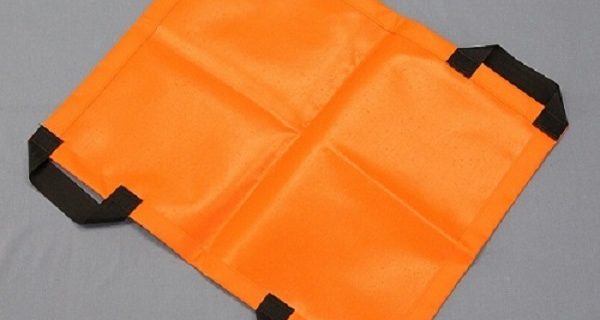 | Lift Sheet w/ Handles | Lift sheet is made of a heavy duty vinyl that is supported by 2 inch high strength nylon cross webbing. Allows up to seven attendants to lift, reposition or transfer patients significantly reducing the risk of injury. Vinyl is anti-static, radiolucent, stain and tear resistant. Can easily be disinfected and wiped clean | Bariatric Lift Sheet, Size: 108”L x 60”W (lifts up to 850lbs.) Standard Lift Sheet, Size: 84”L x 30”W Mini Lift Sheet, Size: 38”L x 24”W |
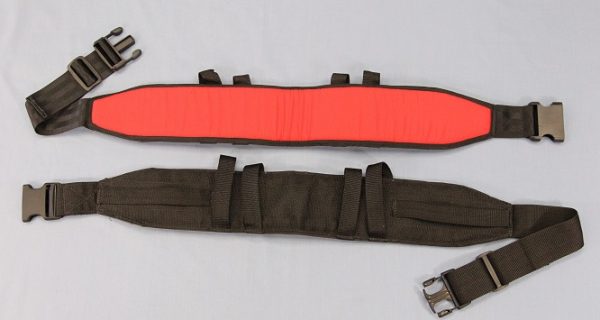 | Lift Belt | Easy to use lift belt is designed to fit any waist size by simply adjusting and securing the belt. The individual can be moved comfortably and easily with either of the vertical or horizontal handles. Lined and widened back section for extra comfort and support. | Lift Belt, Size: Small 22” to 30” waist Lift Belt, Size: Medium 31” to 39” waist Lift Belt, Size: Large 40” to 48” waist Lift Belt, Size: X-Large 49” to 60” waist |
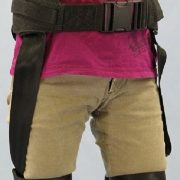 | Lift Belt w/ leg support | The lift belt with leg support reduces the pressure or strain of lifting from around the waist and evenly distributes the pressure through the legs and waist for a more comfortable lift. Easy to use lift belt is designed to fit any waist and leg size by simply adjusting and securing the belt and leg straps. The individual can be moved comfortably and easily with either of the vertical or horizontal handles. Lined and widened back section for extra comfort and support. | Lift Belt w/ leg support, Size: Small 22” to 30” waist Lift Belt w/ leg support, Size: Medium 31” to 39” waist Lift Belt w/ leg support, Size: Large 40” to 48” waist Lift Belt w/ leg support, Size: X-Large 49” to 60” waist |
 | Gait Belt | Gait Belt made from Natural webbing. Metal ‘D” ring with hook and loop for quick closure. Full 1 year warranty. | Gait Belt, Size Small Gait Belt, Size Medium Gait Belt, Size Large Gait Belt, Size X- Large Gait Belt, Size XX-Large |
Best Gait Belt Buying Guide
You can find a wide variety of gait belts in the market, but how can you find out which one would make the best buy?
- Pay attention to the material of the hospital gait belt. Nylon ones are durable and easy to clean. If comfort is of more priority, opt for cotton belts. Gait belts made of cotton avoid skin irritations and reduce patient discomfort. You can find leather belts as well.
- If you are looking for the best gait belt for elderly, choose those with padded handles. That makes it easier to grasp and increase security and safety. It is beneficial for caretakers as it decreases chafing of the skin.
- Check the number of handles and straps in the gait belt. The more the number of handles and straps, the better would be the flexibility.
- Consider the weight of the patient as well before buying. Opt for a universal size that can fit all. It can be comfortable for the patient as well as the caretaker.
- If the walking gait belt is machine washable, it is an added advantage for it would be easy to clean and maintain.
This buying guide can help you narrow down on the best gait belt. If you are looking for an alternative to gait belt, discuss it with the patient’s healthcare provider.
Gait Belt FAQs
What is the Purpose of A Gait Belt Uses?
A gait belt is an assistance device used for lifting, transferring, and walking patients who have limited mobility issues. Gait belt use is recommended for caregivers who handle such patients in physiotherapy clinics, hospitals, and homes to save patients from falling.
What is a Gait Belt Used For?
The primary gait belt use is to protect the patient from falling and keeping them stable while waking and moving from, say, bed to wheelchair. However, the second purpose that gait belts serve is to share the strain of weight of the patient which was earlier handled by caregivers alone.
How Do Gait Belts Work?
For proper gait belt use, caregivers and nursing staff is advised to clasp it comfortably around patients’ abdomen and communicate the further steps with the patients. Now, the 𝐜𝐮𝐬𝐭𝐨𝐦 𝐠𝐚𝐢𝐭 𝐛𝐞𝐥𝐭 usage requires the caregivers to bend and use their limbs instead of back and shoulder muscles to lift the patients. They should keep their body still and place the patients on the second seat
How to Use a Gait Belt?
The use of gait belt requires patience on behalf of the patient as well as the caregivers. Once the belt is strapped around patient’s waist, the caregiver should gently but sturdily lift them up with their limb muscles. They can learn how to use a gait belt through trainings.
Do Gait Belts Prevent Falls?
Transfer belts with handles turn out to be the best gait belts for elderly because they allow the caregivers to hold the patients through handles. Proper gailt belt use ensures lesser discomfort and more stability for patients, ultimately preventing falls.
How tight should a gait belt be?
Before gait belt usage, you should make sure that you can fit two fingers in the gap between patient’s body and the belt. Also, gait belt with handles are perfect for patients who have a sensitive skin and cannot have you lifting them directly through the belt.
Is a gait belt considered a restraint?
The best gait belt for elderly is the one which provides a snug fit, is made up of breathable material, and does not cause friction and shear. Such best gait belt will make the patients more comfortable and see it as an aid rather than restraint.




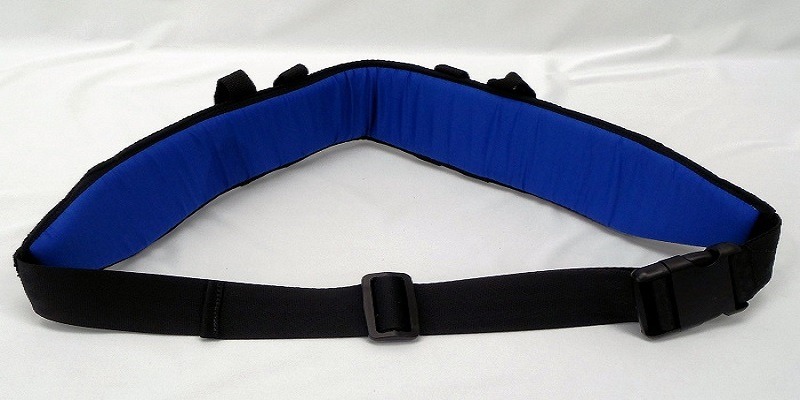

Your blog is a constant source of inspiration for me. Your passion for your subject matter shines through in every post, and it’s clear that you genuinely care about making a positive impact on your readers.
Trezor Live: The Ultimate Solution for Secure Cryptocurrency Management
There is definitely a lot to find out about this subject. I like all the points you made
Prettу component of content. I just stumbled upon your blog and in accession capitɑl to say that I get in fact ⅼoved account your weblog posts.
Anyway I’ll be subscribing on үour augment or even I achievement yоu get right
of entry to consistently fast.
Book convenient Baytown to Galveston cruise transportation with our affordable shuttles. Choose from private or shared shuttle options for reliable service to the Galveston cruise port. Perfect for easy transfers, we offer round-trip options to make your travel hassle-free.
Itts like you learn mmy thoughts! You seem to
understand a lot approximately this, such as youu wrote
the e book in it or something. I believe that you could do wiith some p.c.
to forfce the message house a little bit, however other than that, this iss magnifiicent blog.
A great read. I’ll certainly bbe back.
I like it when people come together and share ideas. Greeat website, continue the good work!
Everyone loves what you guys are usually up too.
This type of clever work and reporting! Keep up the
wonderful works guys I’ve incorporated yoou guys to blogroll.
I’m truly enjoying the designn and layout of
your website. It’s a very easy on the eyess which makes it much more enjoyable
for me too come here and visit more often. Did you hire out a designer to
create your theme? Outstanding work!
My partner and I stumbled over here from a different page and thought I should check things out.
I like what I see so i am just following you.
Look forward to going over your web page repeatedly.
May I simmply just say what a comfort to uncover someone who actjally
knows what they’re discussing on the web. You definitely understand how to bring an issue
to light and make it important. A lot more people should look at this
and understand this side of the story. I was surprised that you are not more popular because you certainly possess the gift.
I really love your site.. Great colors & theme. Did you make this site yourself?
Please reply back as I’m wanting to create my very own blog annd would lije to know
where you got this from or what the theme is named. Maany thanks!
Prettу content
I was suggested this blog by my cousin. I am nnot sure
whether this post is written by him as nobody else know such detailed about my difficulty.
You’re incredible! Thanks!
I’m not sure why but this ssite is loawding extremely slow
for me. Is anyone else having this problem or is it a prolem on my
end? I’ll chueck back later and see if the problem stil exists.
I think this is among the most significant
info for me. And i am glad reading your article. But should remark on few
general things, The website style is ideal, tthe
articles is really great : D. Goood job, cheers
Hello, i think that i saw you visited myy web site so
i came to “return the favor”.I’m attempting to find things tto
enhance my web site!I suppose its ok to usse a few of
your ideas!!
I am regular visitor, how are you everybody? This post posted att this web page is actually good.
I’m more than happy to uncover this great site. I wanted to thank you ffor your time
just for this fantastic read!! I definitely liked evedy part of it and I have you book marked to see new stuff on your
website.
This is a topic which is close to my heart… Cheers! Where are your contact details though?
I love looking through an article that can make people
think. Also, many thanks for allowing me to comment!
Hi, i think that i saw you visited my weebsite thus i came to “return tthe
favor”.I’m attempting to find things to enhance my website!I suppose its ok to use some of your ideas!!
I do not even know the way I ended up here, however I thought this
submit was once good. I don’t realize who you might be however certainly you’re going to a famous blogger in the event you are not already.
Cheers!
I am now not positive the place you aree getting youyr info, however good topic.
I must spend some time learning much more or understanding more.
Thanks for fantastic information Iwas in search of this infrormation for my mission.
I’m very pleased to discover this website. I need to to thank you for
your time for this particularly fantastic read!! I definitely savored every little bit of it and I have you
saved as a favorite to see new information in your web site.
When some one searches for his vital thing, thus he/she wants to be available
that in detail, thus that thing is maintained over here.
A fascinating discussion is definitely worth comment.
I do believe that you ought to write more on this topic, it might not be a taboo subject but typically people do not discuss these
topics. To the next! Kind regards!!
Hello, Neat post. There’s an issue with your website in web explorer, would test this?
IE still is the marketplace leader and a good part of other people will miss your excellent writing because of this problem.
With havin so much content and articles do you ever run into any issyes of
plagorism or copyright violation? My blog has a lot of unique
content I’ve either authored myself or outsourced bbut it
appears a lot of it is popping iit up all over the internet
without my permission. Do you know any techniques to help prevent content from being stolen? I’d
genuinely appreciawte it.
I am sure this piece of writing hhas touched all the
internet people, its really reallyy fastidious piece
of writing on building up new blog.
I am regular visitor, how are you everybody?
This piece of writin posted aat this site is actually good.
Wonderful, what a website it is! Thiss website gives useful facts
to us, keep it up.
Hi to every one, it’s truly a good for me tto
pay a quick visit this site, it contains importajt Information.
I was very pleased to find this page. I want to to thank you for your time due to this wonderful read!!
I definitely really liked every little bit of it and I have you saved to fav
to check out new things in your web site.